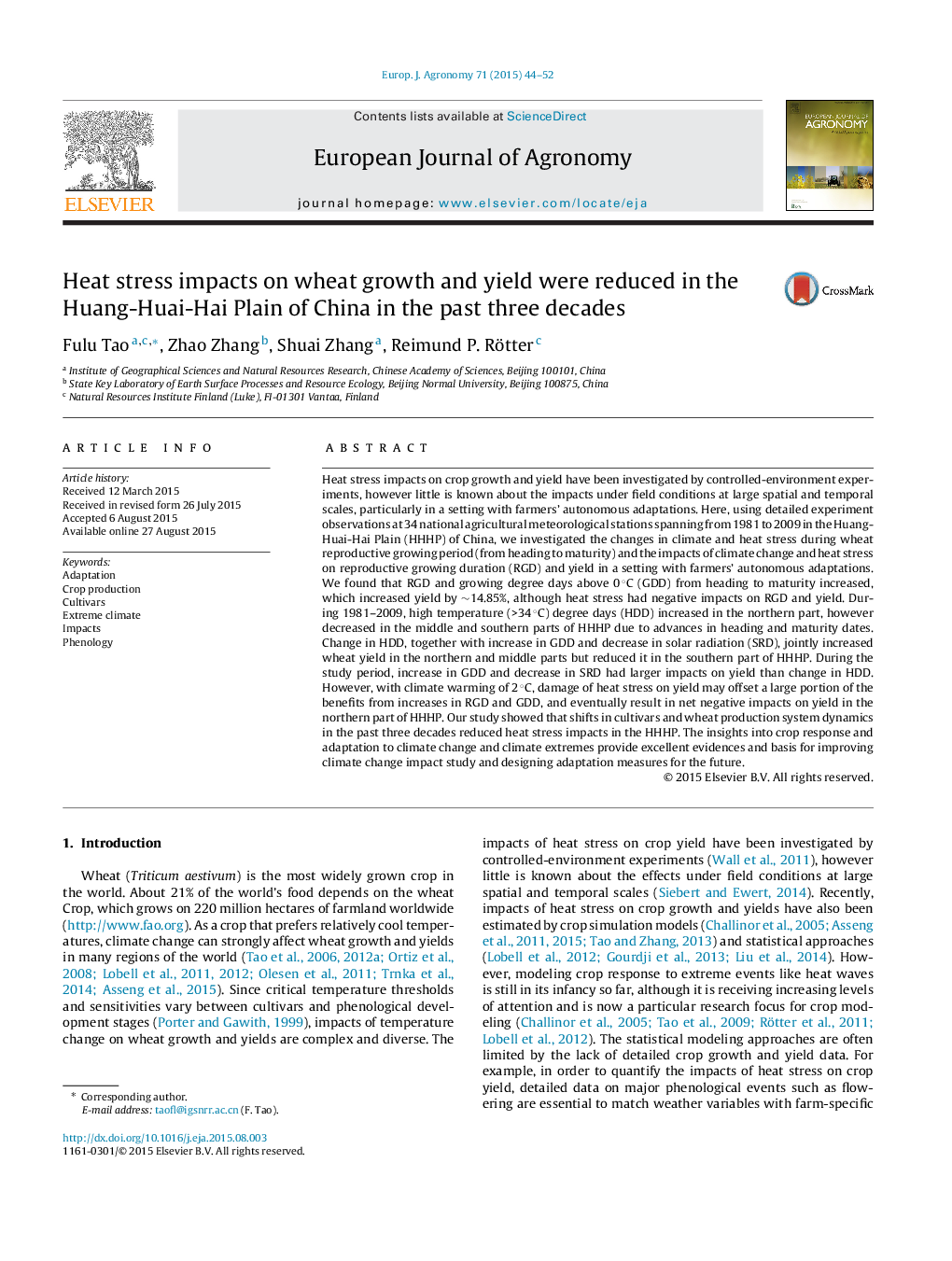| کد مقاله | کد نشریه | سال انتشار | مقاله انگلیسی | نسخه تمام متن |
|---|---|---|---|---|
| 4508745 | 1624454 | 2015 | 9 صفحه PDF | دانلود رایگان |

• Growing degree days (GDD) from wheat heading to maturity increased.
• Increase in GDD increased yield although heat stress had negative impacts on yield.
• High temperature degree days (HDD) decreased due to advances in heading and maturity.
• Changes in GDD and solar radiation had larger impacts on yield than changes in HDD.
• Heat stress may offset a large portion of the benefits from increases in GDD.
Heat stress impacts on crop growth and yield have been investigated by controlled-environment experiments, however little is known about the impacts under field conditions at large spatial and temporal scales, particularly in a setting with farmers’ autonomous adaptations. Here, using detailed experiment observations at 34 national agricultural meteorological stations spanning from 1981 to 2009 in the Huang-Huai-Hai Plain (HHHP) of China, we investigated the changes in climate and heat stress during wheat reproductive growing period (from heading to maturity) and the impacts of climate change and heat stress on reproductive growing duration (RGD) and yield in a setting with farmers' autonomous adaptations. We found that RGD and growing degree days above 0 °C (GDD) from heading to maturity increased, which increased yield by ∼14.85%, although heat stress had negative impacts on RGD and yield. During 1981–2009, high temperature (>34 °C) degree days (HDD) increased in the northern part, however decreased in the middle and southern parts of HHHP due to advances in heading and maturity dates. Change in HDD, together with increase in GDD and decrease in solar radiation (SRD), jointly increased wheat yield in the northern and middle parts but reduced it in the southern part of HHHP. During the study period, increase in GDD and decrease in SRD had larger impacts on yield than change in HDD. However, with climate warming of 2 °C, damage of heat stress on yield may offset a large portion of the benefits from increases in RGD and GDD, and eventually result in net negative impacts on yield in the northern part of HHHP. Our study showed that shifts in cultivars and wheat production system dynamics in the past three decades reduced heat stress impacts in the HHHP. The insights into crop response and adaptation to climate change and climate extremes provide excellent evidences and basis for improving climate change impact study and designing adaptation measures for the future.
Journal: European Journal of Agronomy - Volume 71, November 2015, Pages 44–52